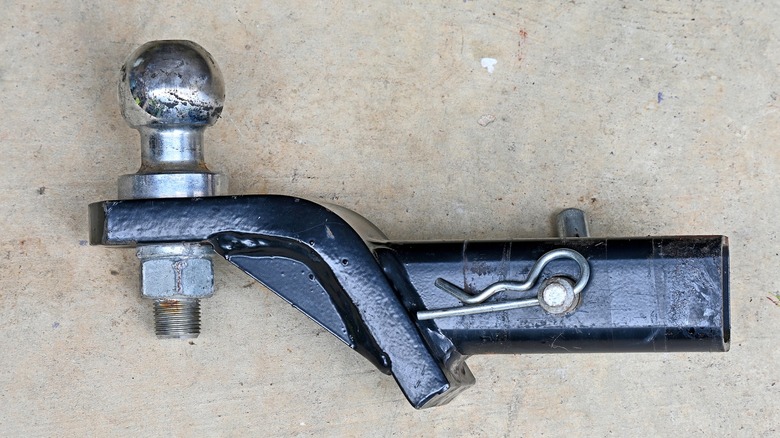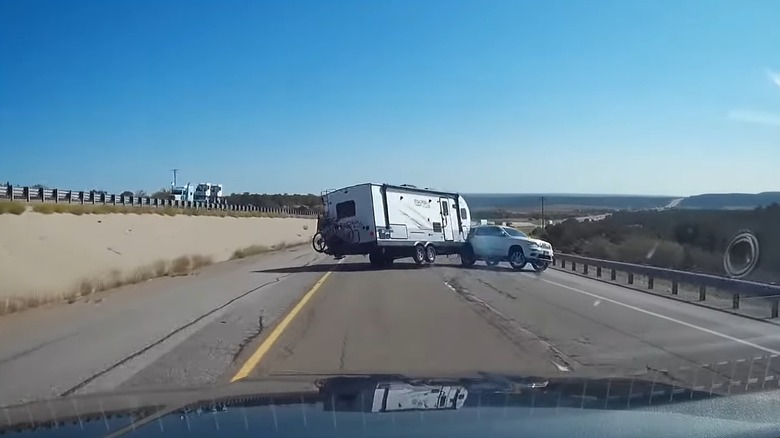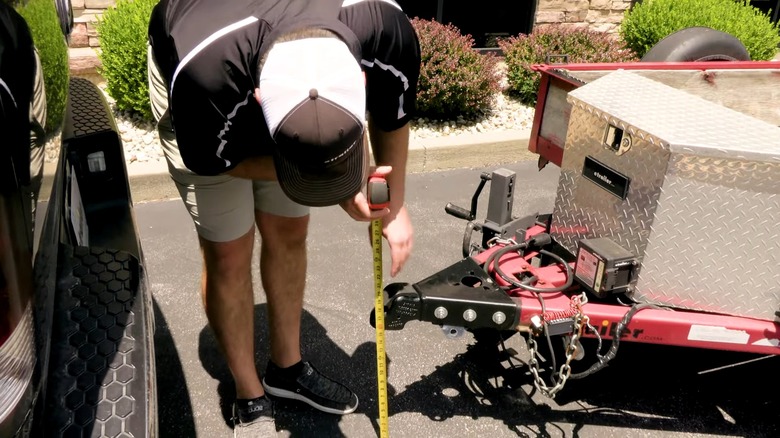Can You Flip A Tow Hitch Upside Down? (And Why You Might Need To)
There are a variety of considerations before attempting to tow a trailer, RV, or even another vehicle. First of all, you'll need to identify the towing capacity of your car, truck, or motorhome in order to verify if it's up to the task in terms of what you plan to pull. One critical thing to remember is that towing capacity figures listed by the manufacturer don't account for any weight beyond the driver alone. Lastly, using a properly rated trailer hitch for the job is of the utmost importance.
If a hitch displays that it's rated for use in either a rise (upside down) or a drop position, as long as you switch the ball and tighten it to recommended specifications, it'll work both ways. The reason you might have to flip your hitch is if your trailer coupler doesn't line up properly with your towing hitch. It's recommended to park the towing vehicle with the trailer directly behind it on flat ground. This will give you an idea of whether the trailer coupler and hitch ball are level with each other. If the trailer is higher than the hitch ball, you can flip the hitch upside down, so it rises toward the taller coupler, bringing them on an equal plane.
Why it's important for the trailer coupler and hitch ball to line up
There are a few problems that can occur if you don't properly align the connection between the towing vehicle and trailer. If the tow ball is higher than the trailer coupler, there won't be enough weight on the trailer tongue, which is typically recommended to be between 10% and 15% of the total trailer weight. Instead, weight will shift toward the rear of the trailer and can cause swaying or even the coupler to disconnect from the hitch ball. Of course, this isn't the only instance where a trailer might sway, as how fast you're driving also contributes. You'd be surprised what speed Harbor Freight's utility trailers are rated for, according to their operation manuals.
Conversely, if the trailer connection is higher than the tow vehicle hitch ball and is angled down, the weight then shifts forward, creating additional force on the trailer tongue. Too much weight pressing on the contact point between the vehicle and trailer puts undue stress on the towing automobile's rear wheels, while also substantially reducing the weight on the front axle. Similar to a seesaw, as the rear of the truck or car is pushed down, the front is lifted up, reducing maneuverability and control.
How to know how much of a hitch rise or fall you need
Once you have your tow vehicle and trailer on flat ground (with the trailer leveled), there are two measurements you'll need to calculate in order to properly and safely connect the two. First, using a measuring tape, see how many inches are between the top of the hitch receiver and the ground. Then, measure the distance from the bottom of the trailer coupler to the ground. The difference between these two figures will indicate how much of a rise or drop you'll need for proper hitching.
For instance, say you have a 2017 Toyota RAV4 with a Curt Trailer Hitch Receiver that measures 15 inches from the top of the receiver to the ground. Then let's say you need to rent a U-Haul trailer, which typically needs the hitch ball to sit around 18 ½ to 18 ¾ off the ground. So, the RAV4's hitch will need to rise 3 ½ inches. However, hitches usually are available in increments of 2 inches, so it's recommended you round up and utilize a hitch with a 4-inch rise for optimal towing results.


